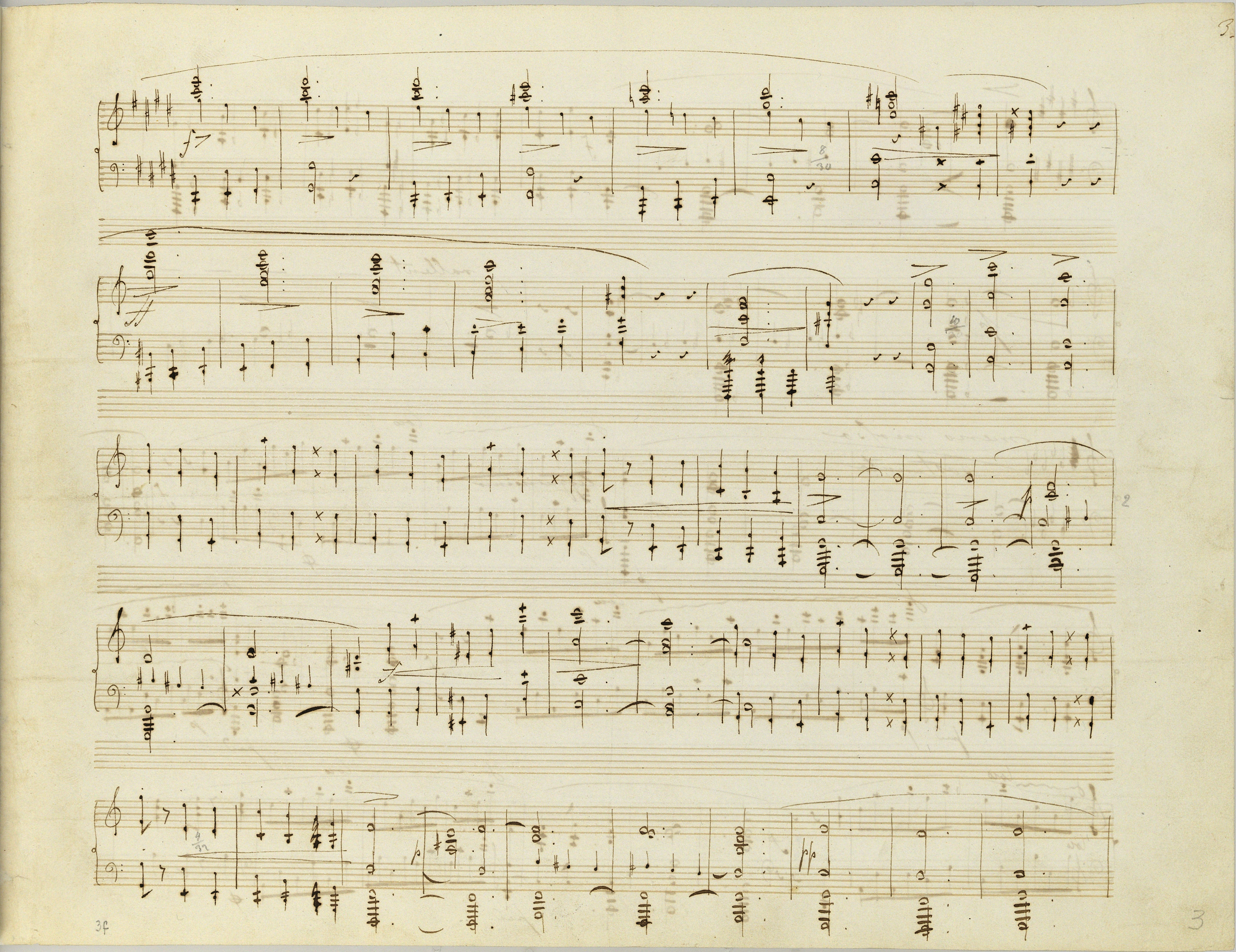



Page:
Source:
p. 5, b. 91-138
GC - Gutmann's copy
Prezentacja
Select

In FE this bar has 7 quavers as, despite the presence of a quaver rest, all the three octaves are written in crotchets. We think that this error should be corrected by adding quaver flags to the octaves at the beginning of the bar; this leads to the version compliant with EE and GC (→GE1). It is also the version that FE has in analogous bars 31 and 373.
The rhythm of GE2 here is absolutely arbitrary.
See b. 47
Compare the passage in the sources »
category imprint: Interpretations within context; Differences between sources
issues: Errors in FE, GE revisions
notation: Rhythm




